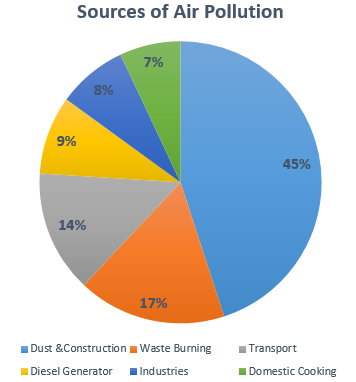Focus: GS-III Environment and Ecology
Why in news?
India is among seven countries that does not share air pollution data in a fully transparent manner despite it being termed as “the greatest environmental risk to health” by the World Health Organization (WHO).
Highlights of a report
- The report highlighted that outdoor air pollution leads to an estimated 4.2 million deaths every year worldwide; more than Ebola, HIV/AIDS, tuberculosis and malaria combined.
- This information vacuum is preventing people from demanding action from their governments to tackle the biggest environmental risk to health, and changing their behaviour.
- The 13 most populous countries (4.2 billion) with populations exceeding 50 million, each, produce real-time air quality data in some format, but not in a fully open manner on a national-level.
- Over half of the world’s population has no access to official government data on air quality, despite the fact that nine out of 10 people breathe air containing high levels of pollutants, according to WHO.
Air pollution in India
- Of the most polluted cities in the world, 21 out of 30 were in India in 2019.
- As per a study, at least 140 million people in India breathe air that is 10 times or more over the WHO safe limit.
- 13 of the world’s 20 cities with the highest annual levels of air pollution are in India.
- Over 50% of pollution is caused by industrial pollution, more than 25% by vehicles, more than 15% by crop burning and 5% by diwali fireworks.
- Air pollution contributes to the premature deaths of 2 million Indians every year.
- India has a low per capita emissions of greenhouse gases but the country as a whole is the third largest greenhouse gas producer after China and the United States.

SAFAR
- The System of Air Quality and Weather Forecasting And Research (SAFAR) is a national initiative introduced by the Ministry of Earth Sciences (MoES) to measure the air quality of a metropolitan city, by measuring the overall pollution level and the location-specific air quality of the city.
- The ultimate objective of the project is to increase awareness among the general public regarding the air quality in their city so that appropriate mitigation measures and systematic action can be taken up.
- SAFAR is an integral part of India’s first Air Quality Early Warning System operational in Delhi.
Air Quality Index (AQI)
- AQI was launched in 2014 with outline ‘One Number – One Color -One Description’ for the common man to judge the air quality within his vicinity.
- It has been launched for monitoring the quality of air in major urban centers across the country on a real-time basis and enhancing public awareness for taking mitigative action.
The measurement of air quality is based on eight pollutants, namely,
- Particulate Matter (PM10),
- Particulate Matter (PM2.5),
- Nitrogen Dioxide (NO2),
- Sulphur Dioxide (SO2),
- Carbon Monoxide (CO),
- Ozone (O3),
- Ammonia (NH3), and
- Lead (Pb).
AQI has six categories of air quality. These are: Good, Satisfactory, Moderately Polluted, Poor, Very Poor and Severe.
Recently in News: The Union Environment Ministry has proposed to extend the measurement of air quality to 22 state capitals and 44 other cities with a population exceeding one million.
-Source: Livemint



